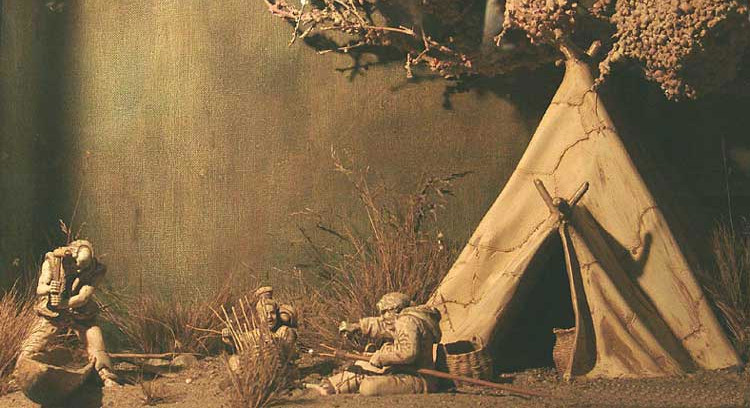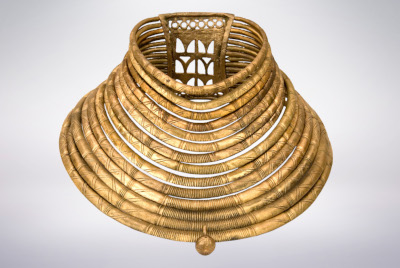Exhibitions
Departments
MIDDLE STONE AGE
Forest trappers
The continuing warming and humidifying of climate, which had begun ca. 11 500 years ago, brought about fundamental changes in the natural environment. The period, known as the Mesolithic (Middle Stone Age) on the European Lowland, witnessed the spreading of mixed forests rich in many species of edible plants and game, resembling animals we know today. The wide availability of food provided subsistence to ever greater bands of humans, who relied on advanced gathering, hunting, birding and fishing.These new circumstances induced changes in the way of life and social organization. For instance, instead of seasonal group hunts and long treks, people hunted in small groups or alone in the immediate vicinity of settlements. Consequently, the human settlement became more stable, with people being more attached to specific areas. Mesolithic populations, which in part poured into Greater Poland from the north and west, much preferred to settle in areas of varied terrain and easy access to water. It was then that Greater Poland saw the earliest funerary rites, the surviving traces of which attest to a complex cult of the dead and a belief in the afterlife.
The exhibition shows a reconstruction of a Mesolithic camp on a lakeshore (ca. 8000 years BC). You can also see here various tools used by people of that time, including flint microliths, bone awls, and a harpoon.

| <Paleolithic |
Neolithic>> |
Nasza strona internetowa używa plików cookies (tzw. ciasteczka) w celach statystycznych, reklamowych oraz funkcjonalnych. Dzięki nim możemy indywidualnie dostosować stronę do twoich potrzeb. Każdy może zaakceptować pliki cookies albo ma możliwość wyłączenia ich w przeglądarce, dzięki czemu nie będą zbierane żadne informacje. Dowiedz się więcej jak je wyłączyć. OK, Rozumiem


